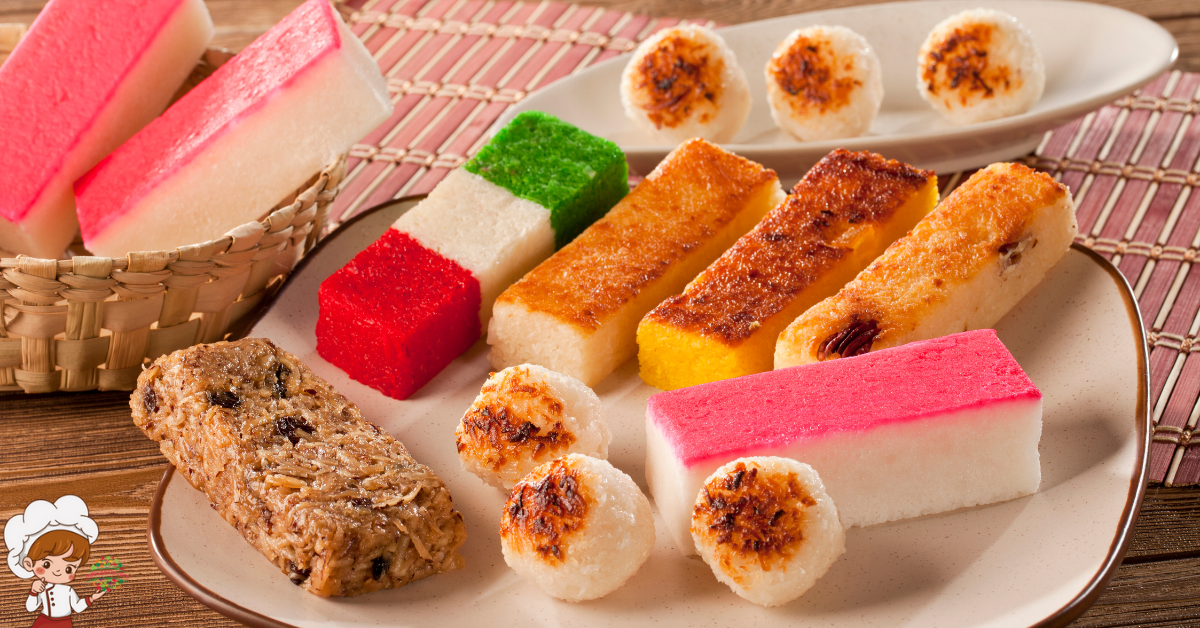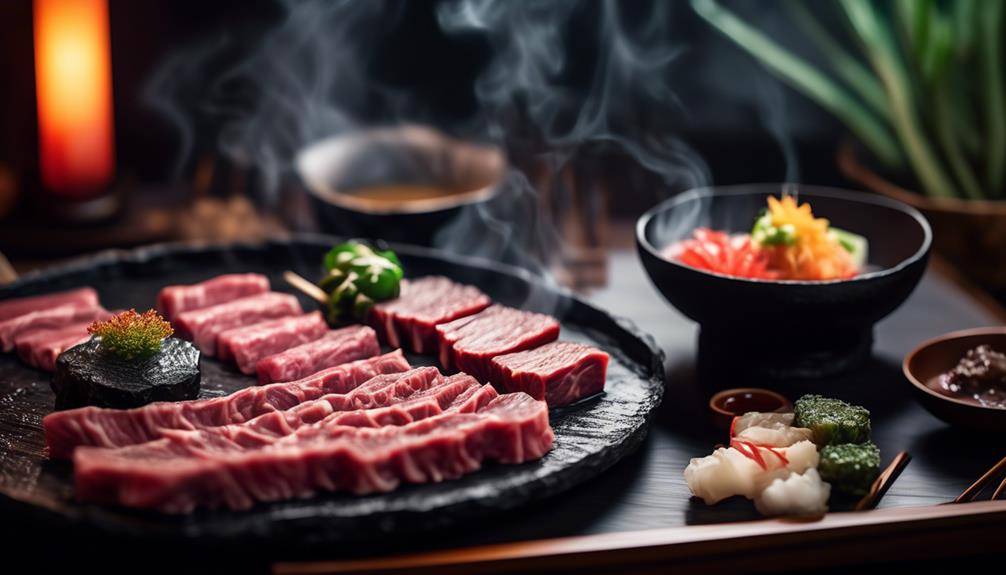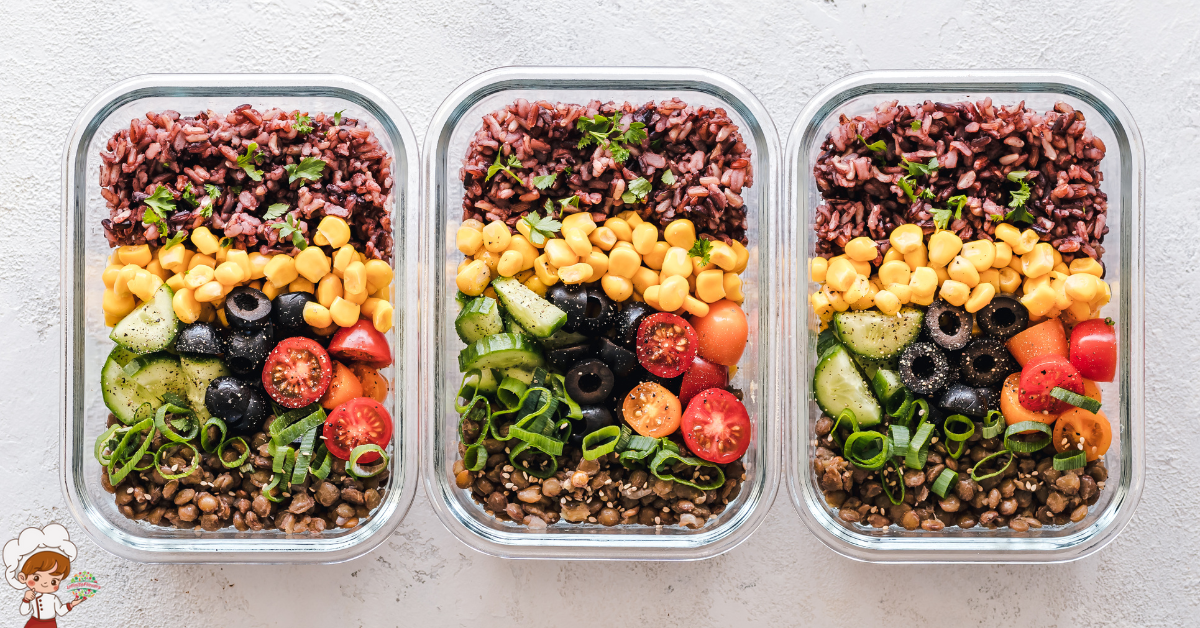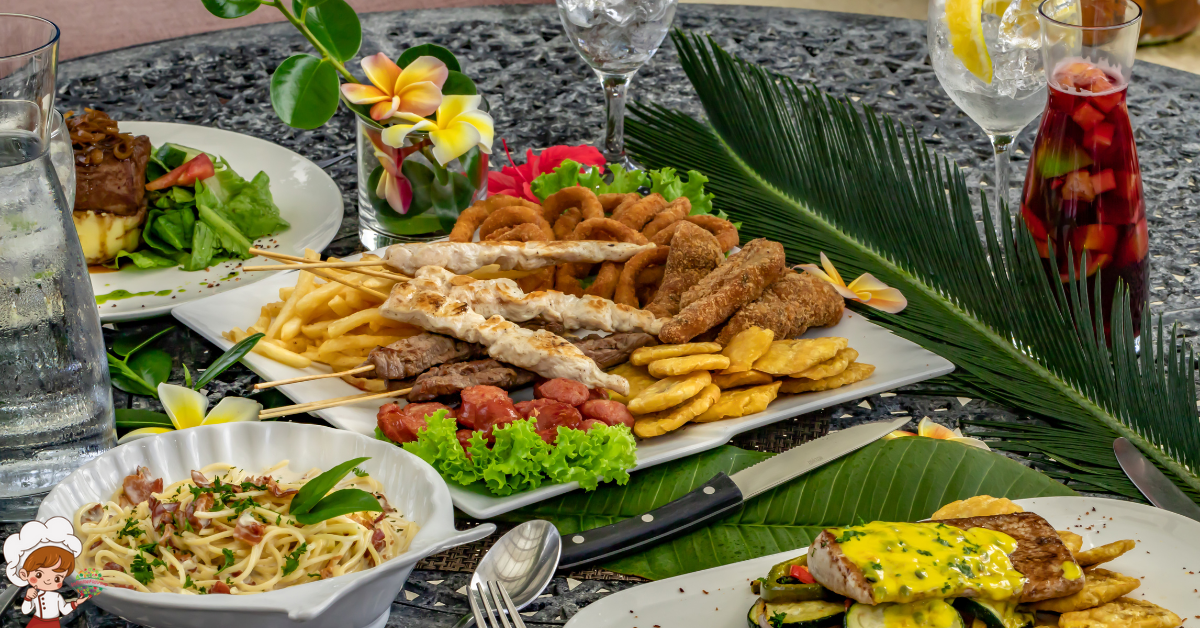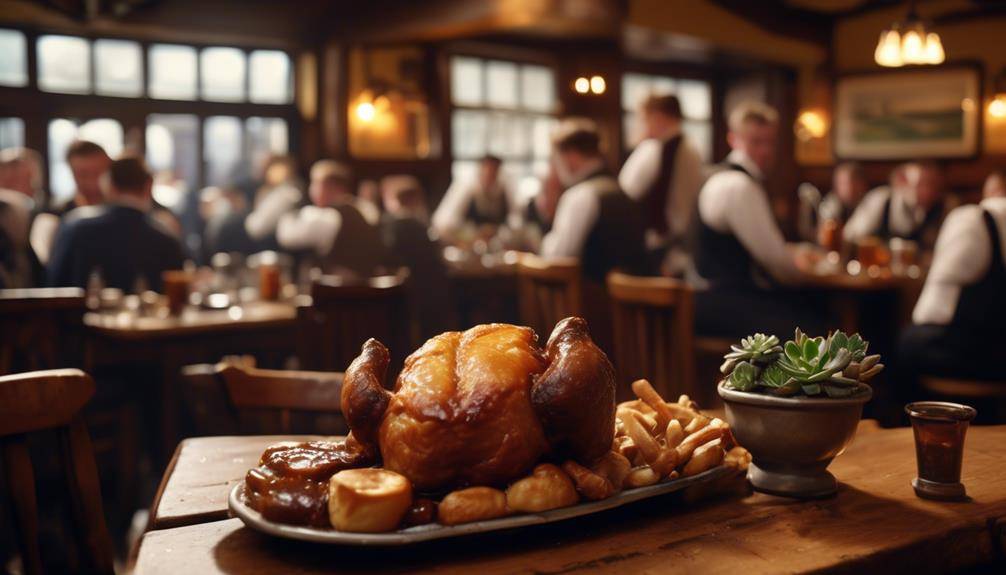Popular Vietnamese Flavors In International Cuisines
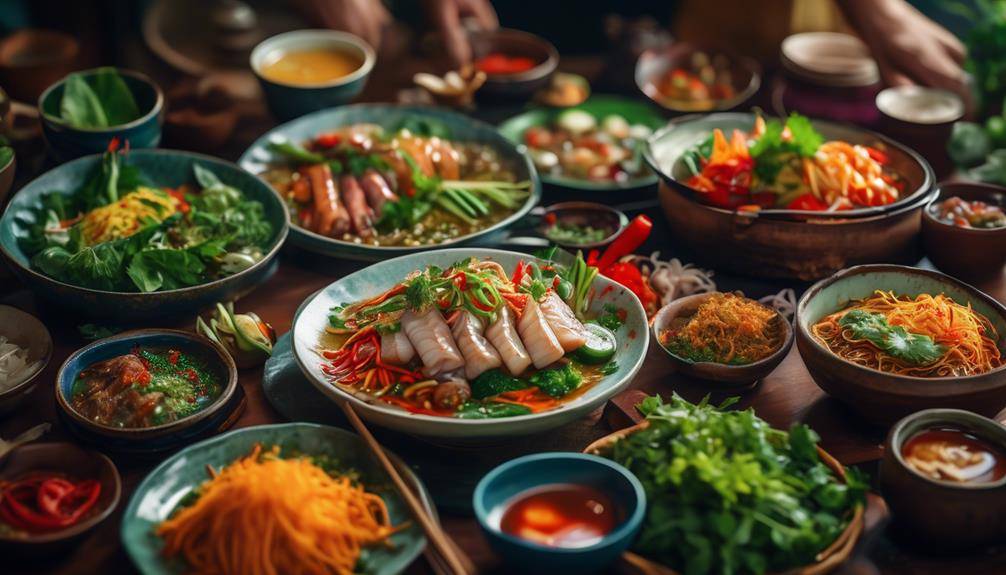
Vietnamese Flavors In International Cuisines; Imagine yourself walking into a bustling market, filled with vibrant colors and the intoxicating aromas of spices and herbs. As you navigate through the crowd, you stumble upon a small food stall tucked away in a corner. Curiosity piques your interest, and you decide to give it a try. As you take your first bite of the dish served to you, you are transported to a world of flavors that dance on your tongue.
This is just a glimpse of the Vietnamese influence in international cuisines. From French delicacies to Thai creations, Chinese classics to Mexican delights, Vietnamese flavors have found their way into various culinary traditions, adding a unique twist that leaves you craving for more. But what makes Vietnamese flavors so captivating, and how do they seamlessly blend with different cuisines around the world? Let’s uncover the secrets behind this global culinary fusion.
Vietnamese Influence in French Cuisine
Have you ever wondered how Vietnamese flavors have influenced the renowned French cuisine? The influence of Vietnamese cuisine on French cooking is a fascinating aspect of culinary history. The fusion of Vietnamese and French flavors began during the French colonization of Vietnam in the late 19th century. This cultural exchange resulted in a unique blend of East-meets-West flavors that has become an integral part of French gastronomy.
One of the most iconic examples of Vietnamese influence in French cuisine is the famous dish called “Bánh mì”. This delightful sandwich is a marriage of French baguette and Vietnamese fillings such as pickled carrots, cilantro, and pâté. The combination of these ingredients creates a harmonious blend of flavors that is both refreshing and satisfying. Bánh mì has gained immense popularity in France and has become a staple in many French bakeries and sandwich shops.
Another Vietnamese influence can be found in the French love for fresh herbs and aromatic spices. Vietnamese cuisine is known for its abundant use of herbs like mint, basil, and coriander, as well as spices like star anise, cinnamon, and ginger. These Vietnamese flavors have found their way into numerous French dishes, adding a burst of freshness and depth of flavor.
Furthermore, the Vietnamese influence on French cuisine extends beyond France itself. Vietnamese flavors have also made their way into other international cuisines. For example, in Spain, Vietnamese ingredients and cooking techniques have been incorporated into Spanish dishes, resulting in unique fusion dishes that showcase the best of both worlds. Similarly, in Middle Eastern cuisine, Vietnamese flavors such as fish sauce and lemongrass have been incorporated into dishes, creating a delightful blend of flavors that is both familiar and exotic.
Incorporating Vietnamese Flavors in Thai Dishes
Incorporating Vietnamese flavors in Thai dishes adds a new dimension of taste, combining the vibrant and aromatic elements of both cuisines. Vietnamese cuisine is known for its fresh ingredients, bold flavors, and delicate balance of sweet, sour, and spicy. Thai cuisine, on the other hand, is famous for its complex flavors, use of herbs and spices, and emphasis on balance and harmony. When these two culinary traditions merge, it creates a unique and exciting fusion that tantalizes the taste buds.
One way to incorporate Vietnamese flavors in Thai dishes is by using herbs and spices commonly found in Vietnamese cooking. Lemongrass, cilantro, and Thai basil are staple ingredients in both cuisines and can add a refreshing and fragrant twist to traditional Thai dishes. The use of fish sauce, a common Vietnamese condiment, can also elevate the umami flavors in Thai dishes such as stir-fries and soups.
Another way to infuse Vietnamese flavors into Thai cuisine is by incorporating Vietnamese-style marinades and sauces. Vietnamese marinades often feature a combination of fish sauce, garlic, sugar, and lime juice, which can be used to marinate meats and seafood before grilling or stir-frying. These marinades can add depth and complexity to Thai dishes, giving them a Vietnamese flair.
Lastly, the technique of Vietnamese fusion in Middle Eastern cuisine can also inspire the incorporation of Vietnamese flavors in Thai dishes. Vietnamese cuisine has been influenced by Chinese and French cooking techniques, and this fusion can be applied to Thai cuisine as well. For example, using Vietnamese-style grilled meats in Thai salads or incorporating Vietnamese-style pickled vegetables in Thai sandwiches can create a harmonious blend of flavors.
Incorporating Vietnamese flavors in Thai dishes opens up a world of possibilities, allowing for creative and delicious combinations. By embracing the vibrant and aromatic elements of both cuisines, you can create a truly unique dining experience that will delight your taste buds. So, why not take your Thai cooking to the next level by adding a touch of Vietnamese flair?
Vietnamese Twist on Chinese Classics
Get ready to tantalize your taste buds with the Vietnamese twist on Chinese classics. The fusion of flavors in Vietnamese cuisine brings an innovative culinary melding that elevates traditional Chinese dishes to a whole new level. Prepare to be amazed as you experience the harmonious marriage of Vietnamese and Chinese flavors in these mouthwatering dishes.
Fusion of Flavors
With a vibrant and unique culinary heritage, Vietnamese cuisine adds its own twist to classic Chinese dishes, resulting in a fusion of flavors that is both exciting and delicious. The incorporation of Vietnamese herbs and spices into Mediterranean dishes brings a new dimension to the traditional flavors of the region. Imagine a fragrant basil pesto infused with lemongrass and ginger, or a tangy tzatziki sauce enhanced with the vibrant flavors of Vietnamese mint and cilantro.
These combinations not only elevate the taste of the dishes but also create a harmonious balance between the different culinary cultures. Additionally, Vietnamese fusion in Middle Eastern cuisine introduces exciting flavors such as hoisin-infused hummus or a Vietnamese-style shawarma with pickled daikon and carrots. The marriage of Vietnamese and Chinese flavors in international cuisines truly showcases the versatility and creativity of Vietnamese cuisine.
Innovative Culinary Melding
To add a unique twist to classic Chinese dishes, Vietnamese cuisine brings innovative culinary melding through the infusion of vibrant herbs and spices. Vietnamese chefs have mastered the art of blending traditional Chinese flavors with their own distinctive ingredients and techniques, resulting in a tantalizing fusion of flavors. By incorporating innovative culinary techniques and cross-cultural flavor combinations, Vietnamese chefs have created a whole new culinary experience that is both familiar and exciting.
One example of this is the Vietnamese twist on the classic Chinese dish, Mapo Tofu. While the base flavors of the dish remain the same – spicy, numbing Sichuan peppercorns combined with rich, savory sauce – Vietnamese chefs add their own unique touch by incorporating fragrant herbs like lemongrass and Thai basil. This infusion of Vietnamese flavors elevates the dish, giving it a fresh and vibrant twist that is sure to please the palate.
Another example is the Vietnamese take on Chinese dumplings. While Chinese dumplings traditionally feature a simple filling of meat or vegetables, Vietnamese chefs take it to the next level by adding aromatic herbs like cilantro and mint, as well as tangy Vietnamese dipping sauces. These additions enhance the flavors of the dumplings, creating a harmonious balance between the traditional Chinese dumpling and Vietnamese cuisine.
Innovative culinary melding is a hallmark of Vietnamese cuisine, and it is through this creative blending of flavors and techniques that Vietnamese chefs are able to put their own unique spin on classic Chinese dishes. The result is a culinary experience that is both familiar and exciting, showcasing the best of both worlds in a single dish. So next time you’re craving classic Chinese flavors with a Vietnamese twist, be sure to try these innovative culinary creations. You won’t be disappointed!
Infusing Vietnamese Elements in Mexican Food
When exploring the fusion of Vietnamese and Mexican cuisines, you’ll discover a tantalizing array of flavors that seamlessly blend the vibrant, aromatic elements of both culinary traditions. Vietnamese Mexican fusion has gained popularity in recent years, as chefs and food enthusiasts have recognized the potential of combining these two rich and diverse cuisines. One intriguing aspect of this fusion is the incorporation of Vietnamese street food in Mexican cuisine. Here are four key ways in which Vietnamese elements have been infused into traditional Mexican dishes:
- Banh Mi Tacos: Imagine the savory, marinated meats and crisp pickled vegetables of a banh mi sandwich, all tucked into a soft corn tortilla. Banh mi tacos are a delicious fusion of Vietnamese and Mexican flavors, combining the best of both worlds.
- Pho-style Pozole: Pozole, a traditional Mexican soup made with hominy and meat, gets a Vietnamese twist with the addition of pho-inspired flavors. Fragrant herbs, spices, and noodles bring a new dimension to this beloved Mexican dish.
- Spring Roll Enchiladas: Spring rolls, a popular Vietnamese appetizer, are reinvented as enchiladas in this fusion dish. Fresh and crunchy vegetables wrapped in rice paper are combined with the rich flavors of Mexican enchiladas sauce, creating a unique and delicious blend.
- Coffee Horchata: Vietnamese coffee, known for its strong and bold flavor, is used to enhance the classic Mexican beverage, horchata. The combination of the robust coffee and creamy rice milk creates a unique and refreshing drink that is both familiar and exotic.
These are just a few examples of how Vietnamese elements have been seamlessly integrated into Mexican cuisine. The fusion of these two culinary traditions creates a truly unique and exciting dining experience that is sure to delight food lovers everywhere. Whether you’re a fan of Vietnamese food, Mexican cuisine, or simply enjoy exploring new flavors, the Vietnamese Mexican fusion offers a world of culinary possibilities. So go ahead, indulge in the tantalizing flavors of this fusion cuisine and embark on a gastronomic adventure like no other.
Vietnamese-Inspired Fusion in American Cuisine
As you explore the fusion of Vietnamese and Mexican cuisines, prepare to be amazed by the innovative incorporation of Vietnamese-inspired elements into American dishes, creating a tantalizing new culinary experience. In recent years, Vietnamese flavors have made their way into American cuisine, resulting in unique and mouthwatering creations that showcase the best of both worlds. One notable example of this fusion is the rise of Vietnamese-inspired burgers, where traditional American patties are infused with the vibrant and aromatic flavors of Vietnamese cuisine.
These burgers often feature a juicy beef patty seasoned with Vietnamese spices such as lemongrass, ginger, and garlic, giving them a distinct and bold taste. Topped with pickled vegetables, cilantro, and a tangy fish sauce-based dressing, these burgers offer a delightful blend of familiar American flavors with a Vietnamese twist. The combination of savory, sweet, and tangy flavors creates a harmonious balance that is sure to satisfy even the most discerning palates.
In addition to burgers, Vietnamese-inspired desserts have also gained popularity in the American culinary scene. Traditional Vietnamese ingredients like coconut milk, pandan, and tropical fruits are now being incorporated into classic American desserts like cakes, puddings, and ice creams. The result is a delightful fusion of flavors, where the richness of the coconut milk complements the sweetness of the desserts, creating a truly indulgent experience.
Whether you’re a fan of burgers with a twist or have a sweet tooth that craves unique flavors, Vietnamese-inspired fusion in American cuisine offers a range of exciting dishes to explore. From the bold and aromatic flavors of the burgers to the creamy and tropical delights of the desserts, these creations are sure to leave you wanting more. So, get ready to embark on a culinary adventure that brings together the best of Vietnamese and American cuisines in one delicious bite.
Japanese Cuisine Infused With Vietnamese Flavors
Japanese cuisine takes on a tantalizing new twist with the infusion of vibrant Vietnamese flavors, resulting in an innovative culinary experience that will leave your taste buds craving more. The combination of Japanese and Vietnamese culinary traditions creates a fusion that is both exciting and delicious. Here are some examples of traditional Vietnamese dishes with a twist, infused with the unique flavors of Japan:
- Pho Ramen: Imagine the comforting flavors of a rich Vietnamese pho combined with the delicate and savory broth of a Japanese ramen. The result is a bowl of noodles that is both familiar and surprising, with the fragrant spices of pho harmonizing with the umami-packed broth of ramen.
- Banh Mi Sushi Rolls: The classic Vietnamese banh mi sandwich gets a Japanese makeover by transforming into bite-sized sushi rolls. The traditional banh mi ingredients, such as pickled vegetables, cilantro, and grilled meat, are rolled into sushi rice and wrapped in seaweed. The result is a delightful fusion of flavors and textures.
- Vietnamese Okonomiyaki: Okonomiyaki, a savory Japanese pancake, takes on a Vietnamese twist by incorporating ingredients like bean sprouts, shrimp, and fish sauce. The combination of crispy edges and tender filling, along with the tangy and savory Vietnamese flavors, creates a unique and delicious dish.
- Pho Sushi Rolls: Sushi rolls are given a Vietnamese makeover by incorporating the flavors of pho. Thinly sliced beef, rice noodles, and fresh herbs are wrapped in rice and seaweed, creating a refreshing and vibrant roll that captures the essence of both Vietnamese pho and Japanese sushi.
The fusion of Japanese and Vietnamese cuisines opens up a world of exciting possibilities, where traditional dishes are transformed into exciting new creations. These innovative culinary experiences are a testament to the creativity and skill of chefs who are pushing the boundaries of flavor and technique. So, go ahead and indulge in this tantalizing fusion of Japanese and Vietnamese cuisines, and let your taste buds embark on a culinary adventure like no other.
Vietnamese Influence in Australian Dishes
When it comes to Australian dishes, Vietnamese influence can be seen in the thriving trend of Australian Vietnamese fusion cuisine. This culinary fusion combines the best of both worlds, blending traditional Australian ingredients and techniques with the vibrant flavors and techniques of Vietnamese cuisine. Popular Vietnamese ingredients such as lemongrass, fish sauce, and fresh herbs are now commonly found in many Australian dishes, adding a unique and delicious twist to the local food scene. Additionally, Vietnamese street food has also served as a source of inspiration for Australian chefs, resulting in the creation of innovative and mouthwatering dishes that pay homage to the vibrant street food culture of Vietnam.
Australian Vietnamese Fusion
With a vibrant mix of Vietnamese flavors and Australian culinary traditions, the fusion of Australian and Vietnamese cuisines has resulted in a mouthwatering array of dishes that showcase the best of both worlds.
- Australian Vietnamese Breakfast: Start your day with a unique twist on a traditional breakfast. Enjoy a hearty bowl of pho topped with bacon and eggs, or indulge in a banh mi filled with crispy bacon, fried eggs, and pickled vegetables. The combination of Vietnamese herbs and spices with Australian breakfast staples creates a harmonious and satisfying meal.
- Fusion Desserts: Indulge your sweet tooth with Australian Vietnamese fusion desserts. Try the pandan lamington, a Vietnamese-inspired twist on the classic Australian treat. These sponge cake squares are infused with pandan flavor and coated in coconut, creating a delightful combination of textures and flavors. Or, sample the Vietnamese coffee panna cotta, a creamy dessert infused with the bold flavors of Vietnamese coffee. The fusion of Vietnamese and Australian culinary influences in these desserts will leave you craving for more.
- Culinary Innovation: Australian Vietnamese fusion cuisine goes beyond traditional dishes. Chefs are continuously experimenting with the fusion of flavors, combining Australian ingredients and techniques with Vietnamese spices and herbs. This culinary innovation has resulted in unique creations like Vietnamese-inspired meat pies, crispy pork belly with Vietnamese caramel sauce, and pho-inspired pizzas. These bold and creative dishes push the boundaries of taste and showcase the exciting possibilities that arise when two diverse culinary traditions come together.
- Cultural Exchange: Australian Vietnamese fusion cuisine reflects the multicultural nature of both Australia and Vietnam. Through food, this fusion creates a bridge between the two cultures, allowing for a deeper understanding and appreciation. It celebrates the diversity of flavors, ingredients, and techniques from both countries, creating a culinary experience that is both familiar and exotic. The fusion of Australian and Vietnamese cuisines not only delights the taste buds but also promotes cultural exchange and understanding.
Popular Vietnamese Ingredients
Popular Vietnamese ingredients have made a significant impact on Australian dishes, infusing them with unique flavors and adding a touch of Vietnamese influence. In Australian Vietnamese fusion cuisine, these ingredients are used in both traditional and modern interpretations, creating a delightful culinary experience. From fragrant herbs like coriander and mint to pungent fish sauce and tangy tamarind, Vietnamese ingredients bring a burst of freshness and complexity to Australian dishes.
The health benefits of these ingredients are also noteworthy. For instance, herbs like coriander are rich in antioxidants and essential vitamins, while fish sauce provides a good source of protein and minerals. Incorporating these ingredients into Australian cuisine not only enhances the taste but also promotes a healthier way of eating. So, next time you try an Australian dish, pay attention to the Vietnamese flavors that make it truly special.
Vietnamese Street Food Inspiration
If you’re looking to experience the vibrant flavors of Vietnamese street food in Australian dishes, get ready to embark on a culinary adventure that will tantalize your taste buds and transport you to the bustling streets of Vietnam. Vietnamese street food has become a major trend in Australia, with many restaurants and food trucks drawing inspiration from the unique flavors of Vietnamese cuisine. Here are four key elements that make Vietnamese street food stand out:
- Fresh Herbs and Vegetables: Vietnamese dishes are known for their generous use of fresh herbs like mint, cilantro, and Thai basil, as well as crunchy vegetables like bean sprouts and pickled carrots.
- Bold and Balanced Flavors: Vietnamese cuisine is all about achieving the perfect balance of sweet, sour, salty, and spicy flavors. From tangy fish sauce to fiery chili peppers, each dish is a symphony of taste.
- Rice Noodles: Pho, a popular Vietnamese noodle soup, has gained immense popularity in Australia. The silky smooth rice noodles add a comforting and satisfying element to the dish.
- Street Food Staples: Vietnamese street food staples like banh mi, a crusty baguette filled with grilled meats, pickled vegetables, and fresh herbs, have become a favorite among Australians.
Adding Vietnamese Flair to Italian Recipes
To infuse Italian recipes with the vibrant flavors of Vietnam, explore the harmonious fusion of aromatic herbs, tangy sauces, and exotic spices. Vietnamese cuisine is known for its unique blend of flavors, and incorporating these elements into Italian dishes can create a truly delightful culinary experience.
One way to add a Vietnamese twist to Italian recipes is by using Vietnamese techniques in baking. For example, instead of traditional Italian bread, you can try making a Vietnamese-inspired baguette infused with lemongrass and ginger. This will add a zesty and aromatic flavor to your sandwiches or bruschetta. Vietnamese baking techniques also often involve the use of coconut milk, which can be incorporated into Italian desserts like tiramisu or panna cotta to give them a subtle hint of tropical sweetness.
Another way to infuse Vietnamese flair into Italian recipes is by using Vietnamese spices in Indian dishes. Vietnamese spices like star anise, cinnamon, and cloves can add a unique depth of flavor to Italian tomato-based sauces, transforming them into rich and aromatic masterpieces. For example, you can add a touch of star anise to your homemade marinara sauce or sprinkle some cinnamon on your pizza before baking. These spices will give your Italian dishes an unexpected twist that will tantalize your taste buds.
Incorporating Vietnamese flavors into Italian recipes allows you to create a culinary experience that is both familiar and exciting. By exploring the use of aromatic herbs, tangy sauces, and exotic spices, you can elevate your Italian dishes to new heights and delight your guests with a fusion of flavors they won’t soon forget. So go ahead, experiment with Vietnamese techniques in baking and Vietnamese spices in Indian dishes, and let your creativity soar in the kitchen!
Exploring Vietnamese Influences in Brazilian Cuisine
As you continue your culinary exploration, let’s now embark on a journey to uncover the fascinating Vietnamese influences in the vibrant world of Brazilian cuisine. The fusion of these two distinct culinary traditions has resulted in a unique blend of flavors that are sure to tantalize your taste buds. Here are some popular Brazilian Vietnamese dishes that showcase this exciting fusion:
- Ca Pua: This dish is a delightful marriage of Vietnamese and Brazilian seafood. It features a succulent fish stew, typically made with catfish or tilapia, cooked in a fragrant broth infused with Vietnamese herbs and spices such as lemongrass, ginger, and turmeric. The result is a rich and aromatic dish that perfectly combines the best of both worlds.
- Banh Xeo: A classic Vietnamese pancake, Banh Xeo has found its way into the hearts and plates of Brazilians. This savory pancake is made with rice flour, coconut milk, and turmeric, filled with a medley of vegetables, shrimp, and pork. Served with a side of fish sauce, this dish is a delicious representation of the Vietnamese influence in Brazilian cuisine.
- Ca Ri: Ca Ri is a delectable Brazilian Vietnamese curry that brings together the flavors of the East and West. This creamy curry is typically made with chicken or beef, cooked with a variety of vegetables such as potatoes, carrots, and bell peppers. The Vietnamese twist comes from the addition of aromatic spices like curry powder, cinnamon, and star anise, creating a unique and flavorful dish.
- Chao: Chao is a popular Brazilian Vietnamese rice porridge that is perfect for breakfast or as a comforting meal on a rainy day. Made with fragrant jasmine rice, this creamy porridge is typically topped with shredded chicken, scallions, and a drizzle of soy sauce. The Vietnamese influence is evident in the use of ginger, garlic, and fish sauce, giving the dish a distinct and delicious flavor.
Exploring Brazilian Vietnamese fusion opens up a whole new world of flavors and culinary experiences. These popular dishes are just a taste of the exciting and delicious possibilities that arise when these two cultures come together in the kitchen. So, grab your forks and get ready to savor the best of both worlds in Brazilian Vietnamese cuisine.
Vietnamese Flavors In International Cuisines; Frequently Asked Questions
What Are Some Traditional Vietnamese Dishes That Have Influenced French Cuisine?
Some traditional Vietnamese dishes have greatly influenced French cuisine. The flavors and ingredients, such as lemongrass, fish sauce, and fresh herbs, have been incorporated into classic French dishes, creating a fusion of Vietnamese and French culinary influences.
How Can Vietnamese Flavors Be Incorporated Into Thai Dishes?
To incorporate Vietnamese flavors into Thai dishes, start by exploring the similarities between the two cuisines. Experiment with blending Vietnamese and Thai flavors, like lemongrass and fish sauce, to create unique Vietnamese Thai fusion dishes.
What Are Some Examples of Vietnamese Twists on Chinese Classics?
If you’re curious about Vietnamese twists on Chinese classics, there are some delicious fusion dishes to try. Vietnamese chefs have put their own modern interpretations on dishes like mapo tofu and Peking duck.
How Can Vietnamese Elements Be Infused Into Mexican Food?
To infuse Vietnamese elements into Mexican food, try blending flavors like lemongrass, fish sauce, and fresh herbs with traditional Mexican ingredients. This Vietnamese-Mexican fusion creates a unique cross-cultural cuisine that is both flavorful and exciting.
What Are Some Vietnamese-Inspired Fusion Dishes Found in American Cuisine?
You can find a variety of Vietnamese-inspired fusion dishes in American cuisine. These dishes combine the unique flavors of Vietnam with American culinary techniques, resulting in delicious and innovative flavor combinations.
Conclusion
In conclusion, the Vietnamese influence in international cuisines is undeniable. From French cuisine to Thai dishes, Chinese classics to Mexican food, and even Japanese, Australian, Italian, and Brazilian dishes, Vietnamese flavors have made their way into various culinary traditions around the world. The unique blend of herbs, spices, and techniques from Vietnam adds a fresh and vibrant touch to these international dishes, creating a truly global fusion of flavors. Exploring the Vietnamese influences in these cuisines opens up a world of delicious possibilities for food enthusiasts everywhere.




